Face-Off: A Guide to Shaving
The pros and cons of different
razor options
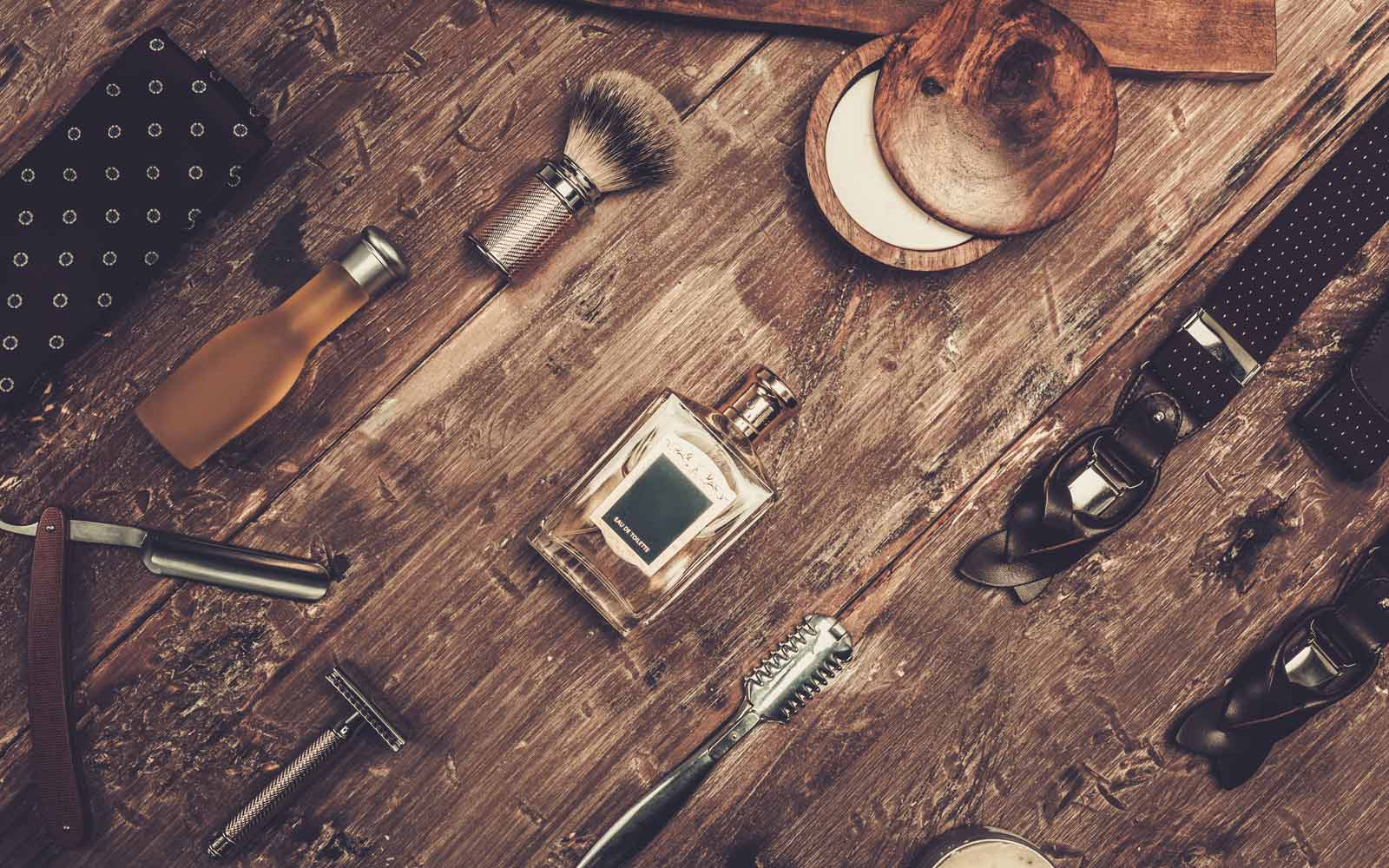
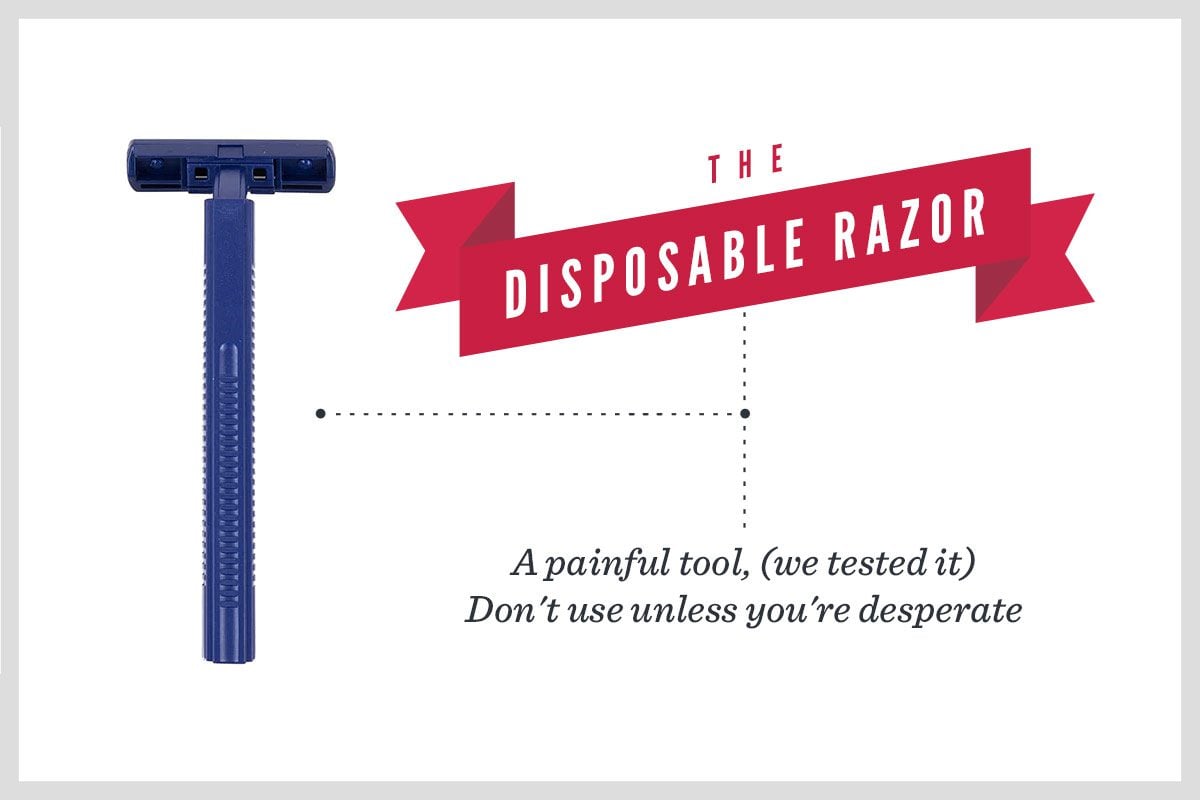

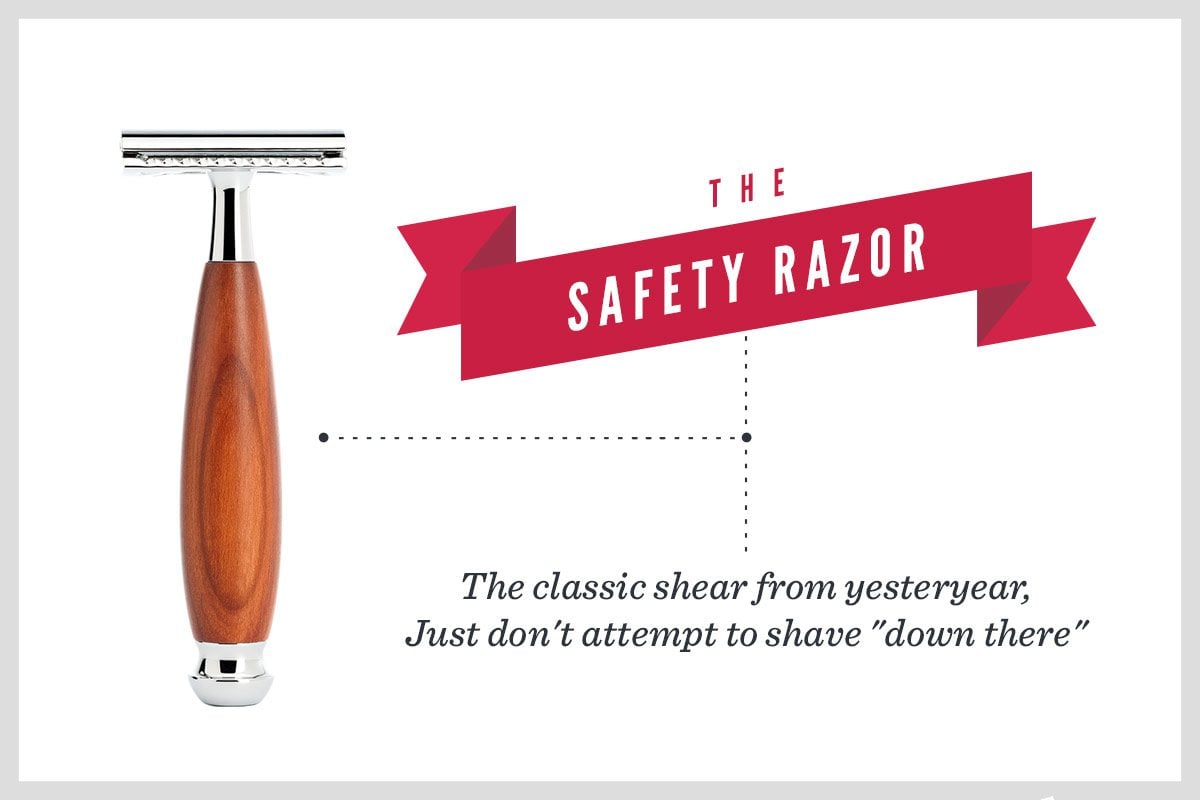
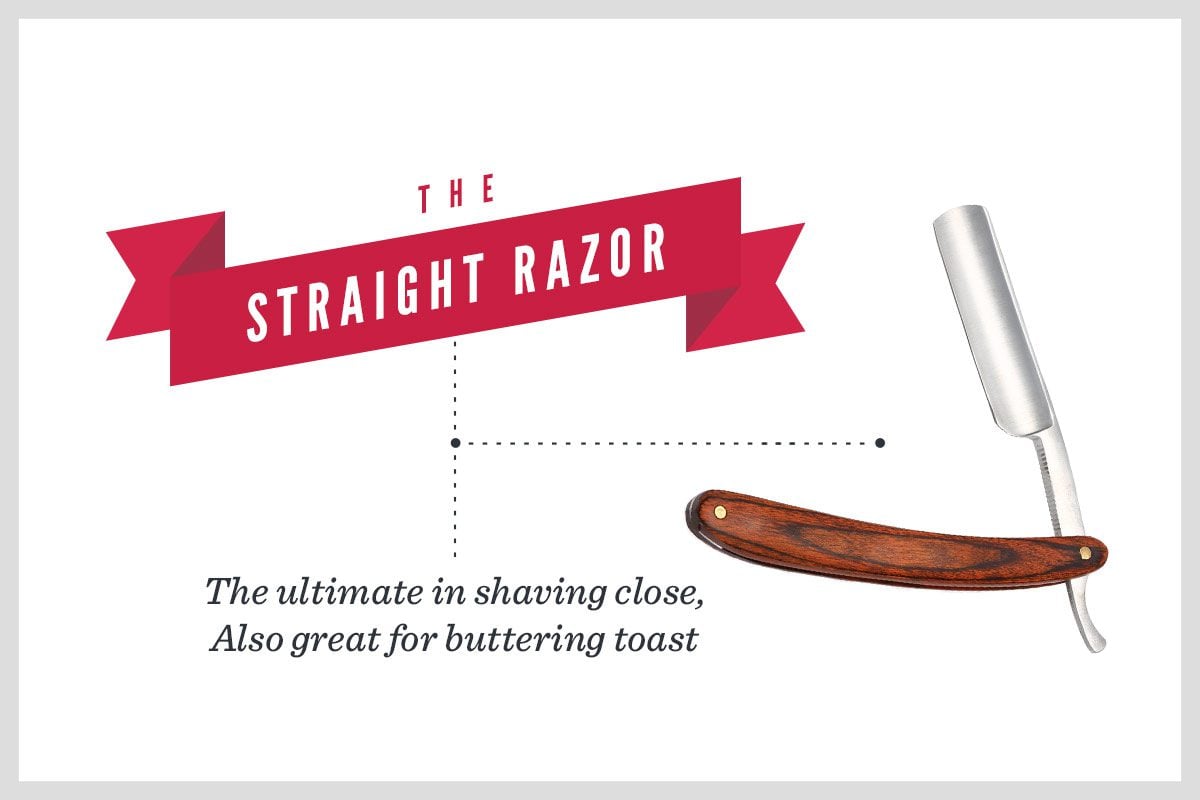
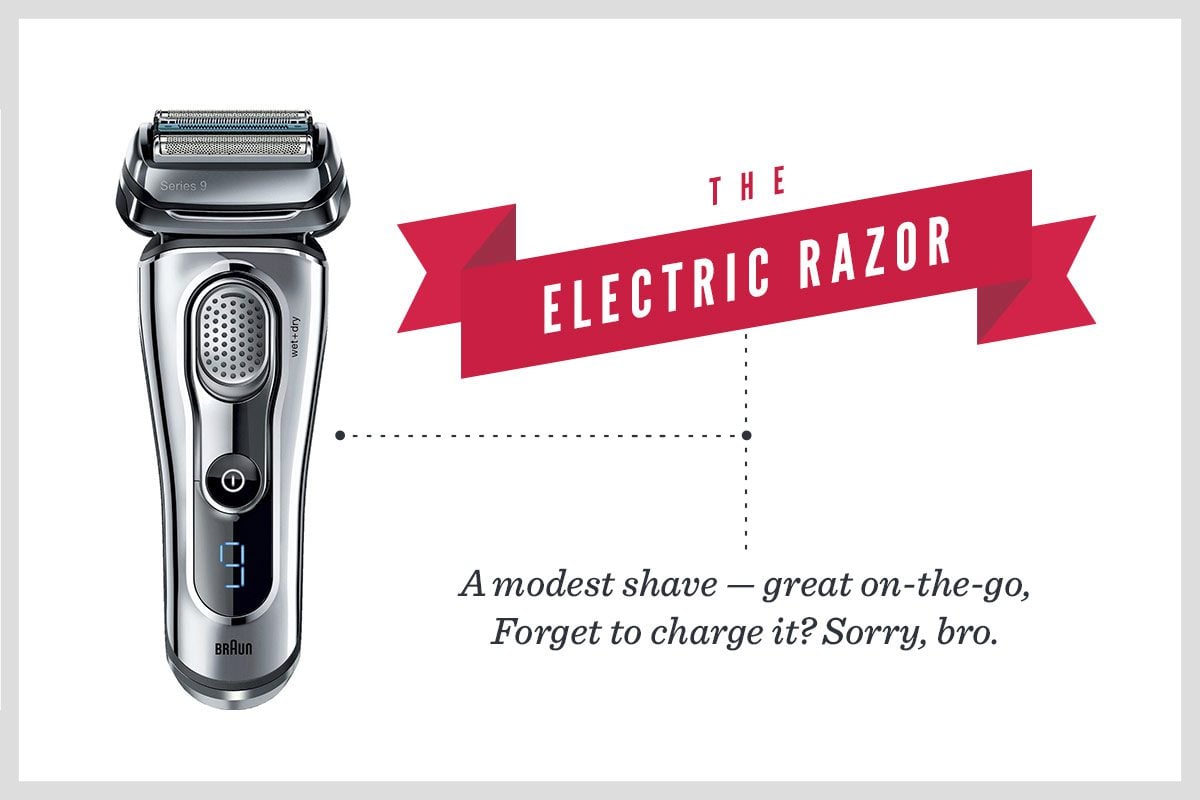


Written by Clifford Chen
Few things in a man’s life can
be as satisfying as a close clean shave. Indeed, many of life’s other very
satisfying things likely involved somebody shaving within the past 24 hours. We
acknowledge that beards and other, less voluminous forms of facial hair have
their own appeal. We address that matter
here. This article is part one of two about elective tracheotomies — shaving,
and the gear you need to do it well. Part two discusses wet vs. dry shaves, and
the differences between shaving soaps, creams, and gels.
Excluding Bowie knives,
obsidian, and shells, there are five main types of shavers from which to
choose:
- straight razor(or straight-edge)
- safety razor
- electric razor
- cartridge razor
- disposable razor
Each type has its merits, and
circumstantial factors and conditions – like what you are shaving and where you
are shaving it – will recommend some options and militate against others.
Disposable Razor

Usually sold in packs of
three, five, ten, or even twenty, these generally inexpensive razors are
well-suited to travelers, particularly those who aren’t too fussy about their
morning toilette. A disposable razor consists of a plastic handle and
non-replaceable head, which may be fixed or adjustable — “adjustable” meaning
only that the blade-head pivots a bit.
Depending on a number of factors — intensity of beard, how often you
shave, how many square inches of flesh you’re planning on mowing – a single
disposable can last anywhere from two to seven days. The quality of shave will
worsen with each use, and we recommend 86ing the device after no more than
three uses maximum. We do not wish to malign an entire product range, but we
hope our readers will resort to these things in extremis only.
Cartridge Razor

Today’s cartridge razors are
generally sold in a package that includes one or more multi-blade disposable
heads, which detach from the handle for replacement. The blades are sharp
enough to provide a good shave, and many replaceable blade-heads (the
cartridges) have flexible centers which bend in order to conform to the
contours of your chin and jawline. If
you prefer to shave in the shower, shave your own head, and/or are punctilious
with your manscaping, this is the razor to use.
There are however a few
downsides to these modern miracles. First, the “multiple blade” system can
encourage ingrown hairs. Heads with more than two cutting edges (“twin blades”)
can clog easily, and you’re thus likely to find yourself replacing blades more
often than the manufacturer recommends. This is the cruelest cut: regular
replacement can get pricey.
Safety Razor

Safety razors may have been
around (at least conceptually) since the late 18th century, but they appeared
on the mass-market retail landscape around 1901. (Does this make them millennials?)
Safety razors are nifty old-school tools — a marriage of form and function
that’s withstood more than a century’s innovations and gizmos. If there’s such
a thing as a genuinely useful steampunk gadget, this is it.
Safety razors consist of a
permanent handle with a fixed metal head, into which one places disposable
stainless steel razor blades.
The fact that these are called
“safety razors” requires explanation. Back when these were bleeding-edge
technology, the semi-captive replaceable blade made these shaving tools “safer”
than straight razors; and it is not an accident that their popular appellation
was part of one manufacturer’s marketing spin. (Well-done, Mr. King Gillette.)
“Safe” is a relative concept, though, and as with straight razors, the proper
use of these requires a tad of practice. A very light touch is sufficient to
denude your cheeks and chin of man-moss. More than a light-touch, and you’ll be
using Neosporin like it’s going out of style.
Basic models will ring-in at
about twenty bucks, but expect to pay nearer to $50 for a razor you’ll be proud
to own and excited to use. Some models are positively gorgeous — we like the
selection on offer here. Blades, which
you will wish to replace every week at least, are not terribly expensive, and
for that reason, a well-made safety razor is a good investment.
Nota bene: Two things to
remember. First, whereas the blades of cartridge/disposable razors are angled
(that is, they have a slight rake, pitching at less than a 90-degree angle to
the handle), the blades in a safety razor are perpendicular (90-degrees) to the
handle. There’s no need to apply a great deal of pressure to your face — a
light touch works best, and never push the razor-head into your face. Second,
this is not a razor to use in the shower. Safety razors are reassuringly heavy
— they are the stainless 1911s of the razor world. Handles tend not have
slip-proof grips, and when wet the knurling present on many handles doesn’t do
much to make the razorless slippy. You do not want to drop a locked and loaded
safety razor when you’re naked. These are hefty and fall fast and furiously. If
you are accustomed to shaving in the raw, do please wear a towel around your
waist while using a safety razor.
Straight Razor

The straight razor is regarded
by many as the king of all razors, and for good reason. Wielded properly, it
enables an expert to achieve the closest shave possible. How close? Think
surgical. Think scraped with a giant phloem. It is unlikely you’ve never seen a
straight razor, and hopefully your frame of reference is not limited to an
infamous scene in Reservoir Dogs.
With most models, the
extremely sharp blade folds into the handle, but there are some glorious
exceptions to this design. Fine,
fixed-blade models can cost well beyond a Benjamin, and a top-end model will
outlast you and your progeny. Not for the fainthearted, and regarded in many
jurisdictions as an offensive weapon, deft use requires practice, patience, and
fortitude. Buy one today. They are perhaps the manliest thing on the planet.
But before attempting to use one, we recommend getting expert tuition from any
professional not named Sweeney Todd or Mr. Blonde.
Electric

Electric shavers are perhaps
the safest and the easiest “razors” to use, and many models allow for either
wet or dry shave. This capacity to safely deliver with reasonable efficacy a
quick dry-shave is, in our view, the most redeeming feature of 21st-century
rechargeable razors. As such, they suit
men who are constantly on the move or are perpetually in a rush. Although some manufacturers assure consumers
that the resulting shave will be as close as a blade, our personal experience
suggests otherwise. Blade “foils” – the sharp bits that do the actual cutting –
will need to be replaced from time to time, and thumps to the blade surface
will sometimes damage these.
Once the foils as compromised,
the unit delivers a very patchy shave at best. Depending on the model in
question, replacement foils can cost as little as $15, and the swap-out is
relatively simple. There’s much to be said for owning and properly looking
after a high-end compact electric shaver — they’re very handy in the lavatories
of trains, airplanes, departure lounges, and office buildings. Using one conspicuously in public – in a
taxi, or on any public conveyance – is in very poor taste, whatever anyone else
tells you. Shaving on the metro is as cool as flossing on the metro. Don’t do
it.

Clifford Chen
SOURCE: THE GENTLEMANUAL
SOURCE: THE GENTLEMANUAL
Comments
Post a Comment